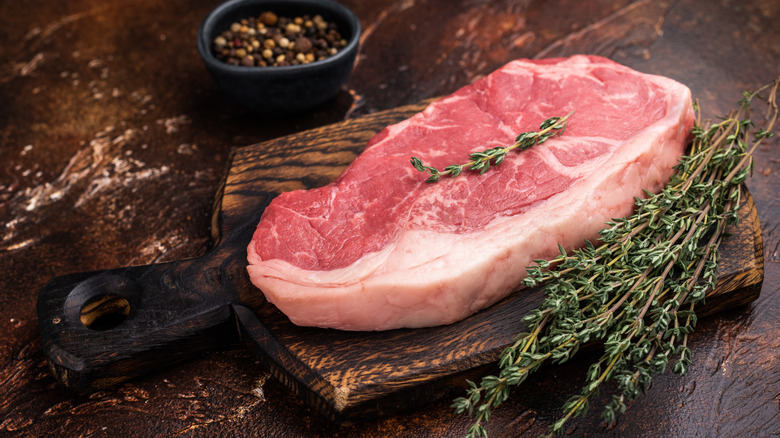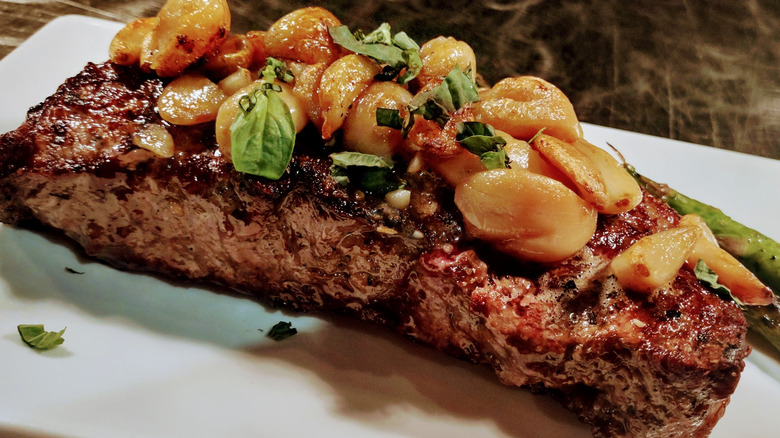The Step You Shouldn't Skip When Seasoning NY Strip Steaks
The cut of beef known as the New York strip steak is a favorite among butchers, grillers, and eaters alike, widely considered one of the best steak cuts available. When cooking this meaty marvel, various expert techniques can help you achieve restaurant-quality results. To gather some insider expertise for optimal execution, Food Republic consulted Chef K.C. Gulbro, owner of FoxFire Restaurant and chef ambassador for Certified Angus Beef®. The chef generously shared several expert tips for preparing a well-cooked New York strip — including one crucial step you should never skip.
After removing your steak from the refrigerator ahead of time for optimal tenderness, the essential step not to overlook is pre-seasoning the meat with salt. Skipping this step is one of the most common mistakes when cooking steak. "Massage them with a bit of olive oil and pre-season," Gulbro advised. "Let the salt and time allow the steak to relax before grilling."
When seasoning, coarse salt is indisputably the best choice, as its larger granules adhere better to the meat than ordinary table salt. Coarse salt also helps develop a good crust on the steak as it cooks.
Chef Gulbro offered another tip for achieving an ideal crust on your New York strip. "To achieve the perfect crust, we like to start with a hot iron," he explained. "At FoxFire, we begin with the grill and finish our traditional cuts in the oven on a hot pan with a drizzle of olive oil on the steak. The hot iron creates the perfect Maillard effect."
More New York strip steak tips
For the best possible outcome when cooking a New York strip steak, starting with a high-quality cut of meat makes all the difference. "Purchase the right steak!" K.C. Gulbro advised. "Certified Angus Beef brand New York strips are phenomenal. If you cannot find Certified Angus Beef, ask your butcher for a well-marbled New York strip without the vein."
The vein, he explained, runs through the meat and makes the steak chewy. A home cook can manually remove it before preparing the steak, using the trimmed section for another dish. However, the ideal approach is to have a butcher remove the vein before you leave the shop.
When it comes to doneness, Gulbro prefers a medium-rare finish. "You give the steak enough time to get that excellent Maillard effect, and you have a juicy center full of flavor," he said. The more a New York strip is cooked, the tougher and drier it can become, so medium-rare offers the best balance — neither overdone nor underdone. For those who prefer a well-done steak, he suggests cutting the meat thinner and using a marinade to help compensate for the loss of moisture.


